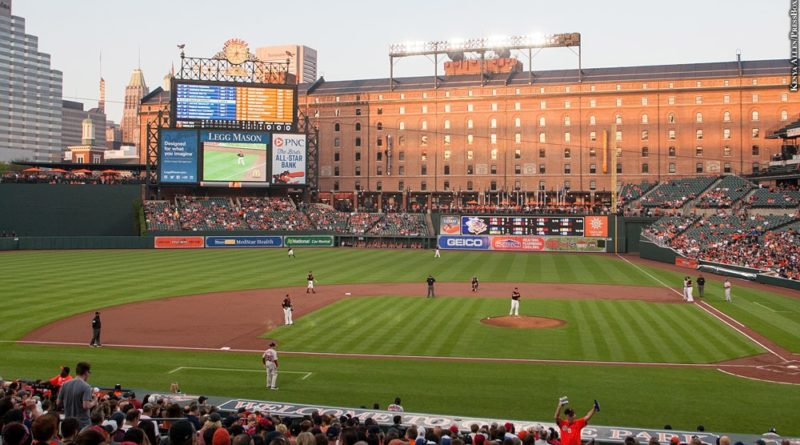A rebuild as robust as the Orioles are in the early stages of has a bunch of incremental parts to it, and in 2020, the Orioles must begin to turn the tide on what amounts to a total five-year collapse from the pitching rubber.
I’ll get to the details of how that may play out across the spring and summer in a bit, but first let’s review just how bad it’s been since the Orioles’ exciting 2014 season, during which the team came close to playing in its first World Series since 1983.
Sure that team had the “old” Chris Davis, Manny Machado, Adam Jones, Nick Markakis, J.J. Hardy, Matt Wieters and a bunch of solid pieces on the bench. But the pitching staff also held up its end of the bargain, pitching 1,461 innings with a 3.43 ERA and 1.24 WHIP.
Since then, times have gotten tougher, and the pitching is a big part of that. In 2015, the Orioles posted a 4.05 ERA and 1.31 WHIP; 2016, 4.22 and 1.36; 2017, 4.96 and 1.44; 2018, 5.18 and 1.49, and 2019, 5.59 and 1.45.
Those 2019 numbers carried a remarkable number of blowout losses. The Orioles lost 40 games by five or more runs and lost another 27 games by three or four runs.
Not that the results would have been drastically different a year ago, but general manager Mike Elias was brought in late, and with a shrinking budget for player acquisition, the only major-league free agent signed before the 2019 season was right-hander Nate Karns, who had battled injuries in recent years. After just 5.1 innings, Karns was done for the year. And veteran right-hander Alex Cobb, who the Orioles were counting on for 175-plus innings, was limited to just 12.1 innings.
The Orioles then quickly thumbed through free-agent pickup Dan Straily (9.82 ERA in 47.2 innings) and in-house candidates Josh Rogers (8.79, 14.1) and Yefry Ramirez (6.97, 10.1).
Though the Orioles aren’t spending big in the middle of a rebuild, what the club has done this offseason is create some depth to avoid the mess it ran into in 2019. The Orioles also have some young pitchers in the farm system on the way. Both could help the club trend the right way on the mound in 2020.
The rotation will be led by lefty John Means, who — fingers crossed — could jump into the 175-inning territory after throwing 155 in 2019. Right-hander Asher Wojciechowski looked fatigued last September after a long season, so I’ll pencil him in for 125 innings. I have Cobb cautiously penciled in for 125 innings as well. I also expect the Orioles to sign another veteran to pitch about 175 innings in 2020.
To create some depth, the Orioles signed lefty Wade LeBlanc, who was a pleasant surprise for the Seattle Mariners in 2018, to a minor-league deal. LeBlanc threw 162 innings with a 3.72 ERA and a 1.17 WHIP in 2018. But last year, he made just eight starts, pitched to a 5.71 ERA and allowed 28 homers in 121.1 innings. He’ll try to bounce back at age 35 in a swingman role.
Likewise, the club is taking a flyer on right-hander Kohl Stewart, the No. 4 overall pick of the 2013 MLB Draft by the Minnesota Twins. He’ll get his chances and should get close to 100 innings. Brandon Bailey, a Rule 5 right-hander from the Houston Astros, may be the best of this trio. I think Bailey will pitch a tick more than 100 innings.
Of course, expect to see prospects Dean Kremer and Keegan Akin up for a couple spot starts at some points during the season. All told, if this can go right, I’d like to see the starters come in at a tick above 5.0 innings per game and throw roughly 815 of those 1,450 innings needed for the season.
The bullpen is full of familiar names: Mychal Givens, Paul Fry, Richard Bleier, Miguel Castro, Shawn Armstrong and the young tandem of Dillon Tate and Hunter Harvey. Tate and Harvey could be part of the late-inning, high-leverage crew. That doesn’t consider the likes of David Hess, Cody Carroll, Evan Phillips, Travis Lakins and Rule 5 pick Michael Rucker.
With the starters averaging about 5.0 innings per game, that means the bullpen will be used often. It’s vitally important that the bullpen’s usage doesn’t include a lot of early appearances in games. The combination of early and often was a recipe for an overused and seemingly always fatigued bunch in 2019.
Make no mistake here: The shuttle between Norfolk, Va., and Baltimore will be in play. But if these starters can avoid the same number of early implosions, manager Brandon Hyde might be able to navigate through the remaining 625 innings by his bullpen with some semblance of understood roles and some much-needed rest.
We all know the Orioles have very little chance to move the win needle until Michael Baumann, Grayson Rodriguez, DL Hall, Zac Lowther and a few more high-end guys come up in 2021 and 2022. But if the club can use the depth it has created to lower its 5.59 ERA from a year ago to 4.85 and get some consistent outings by a limited rotation, perhaps it can knock the number of games it lost by three or more runs from 67 down to maybe 30 or 35.
What will that do? It may not allow the 2020 Orioles to win even one more game than the 54 they won a year ago, but my hunch is they’d win six to eight more games and play in competitive games more consistently. That’s where the entertainment comes in … and might begin to set the table for more overall improvements in 2021 and beyond.
Photo Credit: Kenya Allen/PressBox

